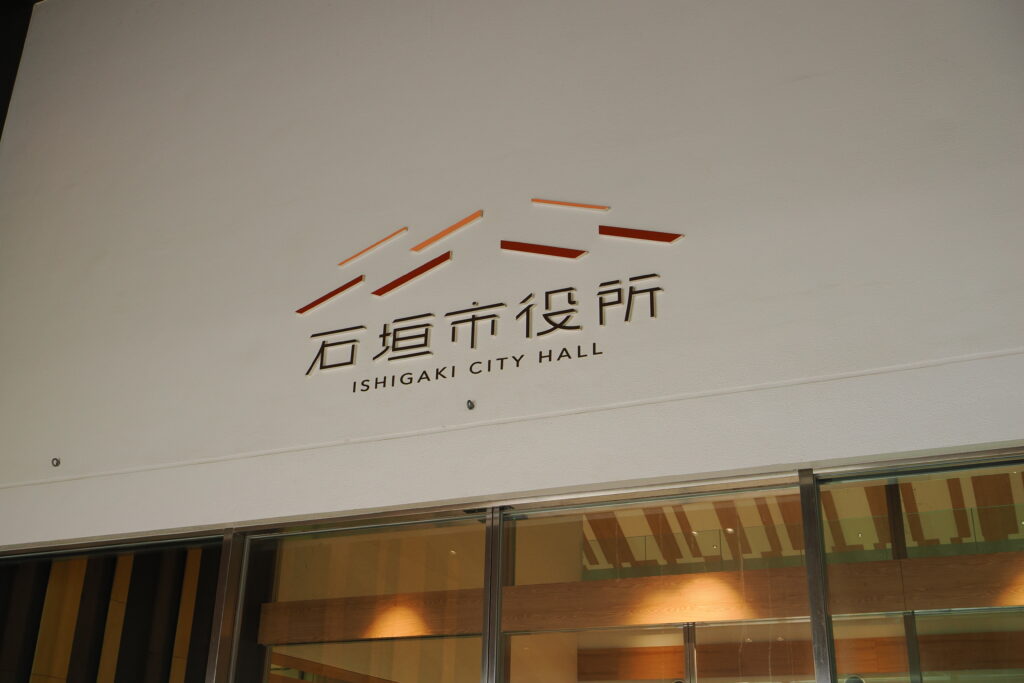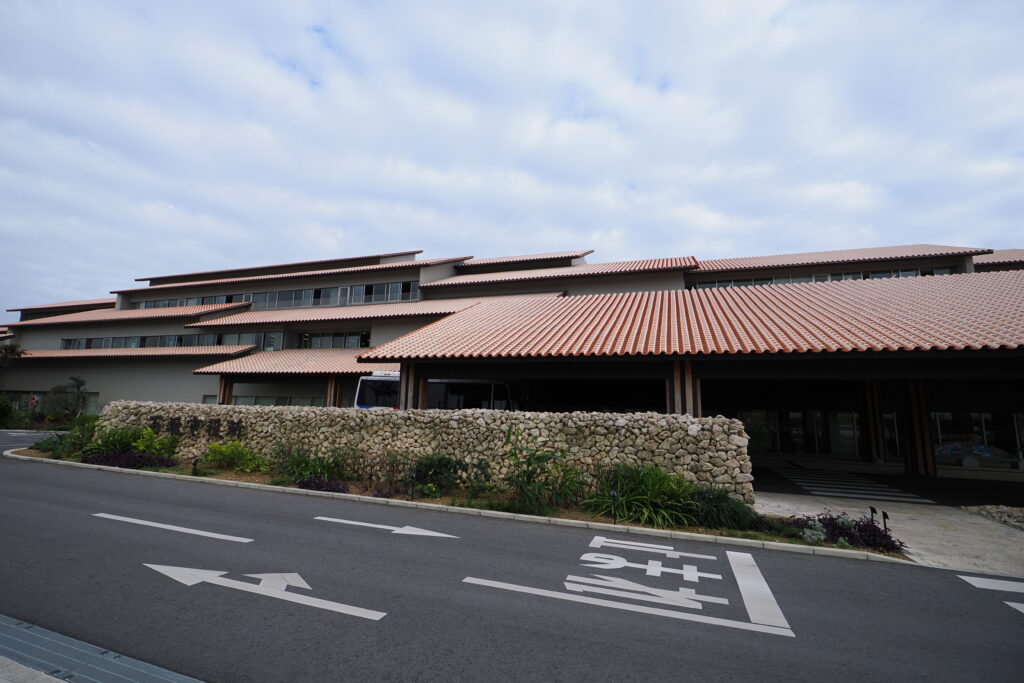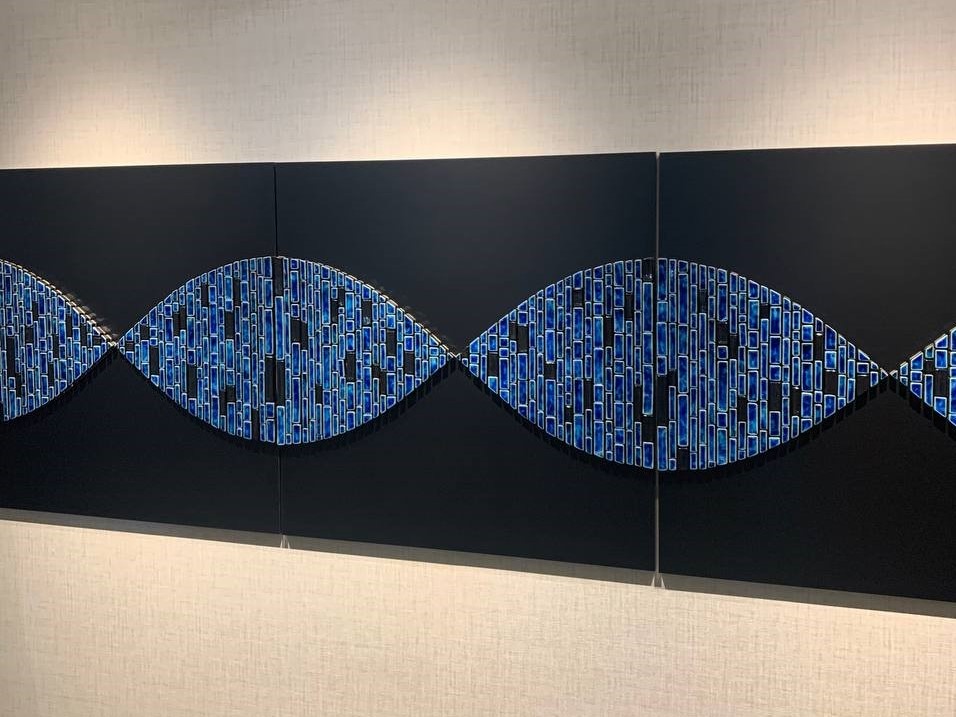Suvanova Yulduzkhon
We headed towards Ishigaki City Hall right after leaving the airport while getting introduced to the island’s beautiful scenery, streets, and the nature with tropical vegetation, hills, and a very unique architectural code of the town. As bus arrived to the city hall, at first, from afar it did not stand out from other building we’d seen previously during our travel, but only as you come closer to the building, you see its true magnificence: an absolute unit that combines the features of both modern sustainable architecture where everything used plays a specific functional role and an homage to the traditional Okinawan architecture.

Designed by renowned architect Kengo Kuma in 2017, Ishigaki City Hall serves as both the administrative center of the town and a popular tourist destination.
The building’s most striking feature is its exterior façade, which is very shadowy with the roof designed in an overlapping and slightly chaotic manner to adjust the temperature during the hot summer days, with columns made in dark background to contrast with the vertical wooden tiling and the traditional roof made with Okinawan red tiles – which by the way, also serves as a rainwater harvesting technology.
We were welcomed by the staff that introduced us to the building and revealed many interesting facts about the building and how sustainability was kept in mind at each stage of planning and designing the building. We also met Matthew Topping, International Relations Support Specialist at the City Hall, who introduced us to Minsah and the symbolic meaning of the ‘5 and 4’ pattern – which we would later encounter everywhere on the island throughout the whole trip. We also learned from him about the efforts to preserve the local language and culture, many interesting facts about the Yaeyaman language, etc.
As we had previously discovered with friends that the word Ishigaki itself means a stone wall, we also asked Matt (that’s what he let us call him) about the massive stone wall installed at the entrance with the City Hall’s plaque on it and whether there was a connection there. Turns out, these walls are found throughout Ishigaki Island and have a special cultural and historical significance. They are considered to be sacred structures that represent the spiritual and physical protection of the people who live behind these walls. The walls were built using natural materials such as stone and coral, which were carefully selected and placed to create a strong and resilient structure that could withstand natural disasters, attacks, and other threats – to the extent where residents of the island reckoned locks and strong doors to keep burglars away unnecessary if there’s a stone wall.

Inside, the City Hall building is equally impressive. The building’s interior spaces are designed to be open and welcoming, with natural light and warm wood finishes throughout. The central hall is particularly impressive, with a soaring ceiling and a warm and inviting wooden design that reflects the island’s natural beauty and cultural heritage. The use of wood throughout the building creates a sense of warmth and coziness, and provides a contrast to the building’s sleek and modern exterior.
The wooden design of the Ishigaki City Hall’s interior is both functional and beautiful. It provides a warm and inviting environment for employees and visitors, while also reflecting the island’s natural beauty and cultural heritage. The use of wood throughout the building is a testament to the island’s rich natural resources and demonstrates the importance of sustainability and environmental stewardship. Overall, the wooden design of the Ishigaki City Hall’s interior is a beautiful and fitting tribute to the island’s unique cultural heritage and natural beauty.

In addition to that, the interior exhibits a number of artworks including the abovementioned Minsah fabrics, murals, etc. One of the most stunning design elements inside the Ishigaki City Hall is the Ishigaki glass panel. The panel is made up of hundreds of small glass tiles, which are known for their vibrant colors, intricate designs, and high-quality craftsmanship. Each of these tiles is hand-painted with a unique what design that reflects the island’s natural beauty and cultural heritage. The tiles are arranged in a mosaic pattern that creates a larger image of waves. It is quite symbolic as well: the blue color of the glass tiles represents the deep blue waters that surround Ishigaki Island, while the wave-like pattern symbolizes the island’s connection to the ocean and the natural beauty of the surrounding seascape.
Another key feature of the building is its earthquake resistance system. Consisting of a series of concrete column-like bracings, this system helps to reduce the impact of earthquakes on the building byy providing additional structural support and stiffness and thus reducing the amount of movement and deformation that the building experiences during an earthquake.
In conclusion, the Ishigaki City Hall Building is a true masterpiece of modern architecture. Its design seamlessly blends traditional and contemporary elements, creating a building that is both striking and welcoming. Its blend of traditional and contemporary design elements, commitment to sustainability, and emphasis on creating welcoming and open spaces make it a true treasure of the region and certainly a highlight of our trip.



